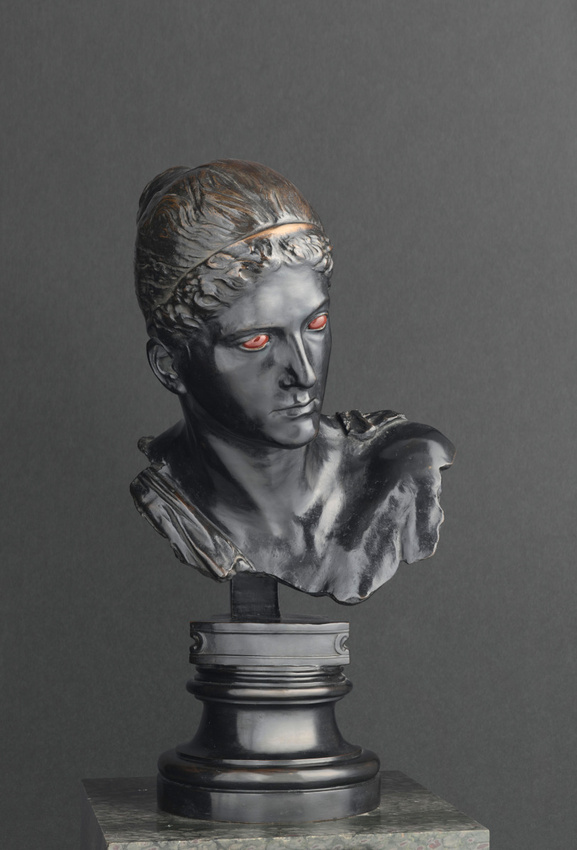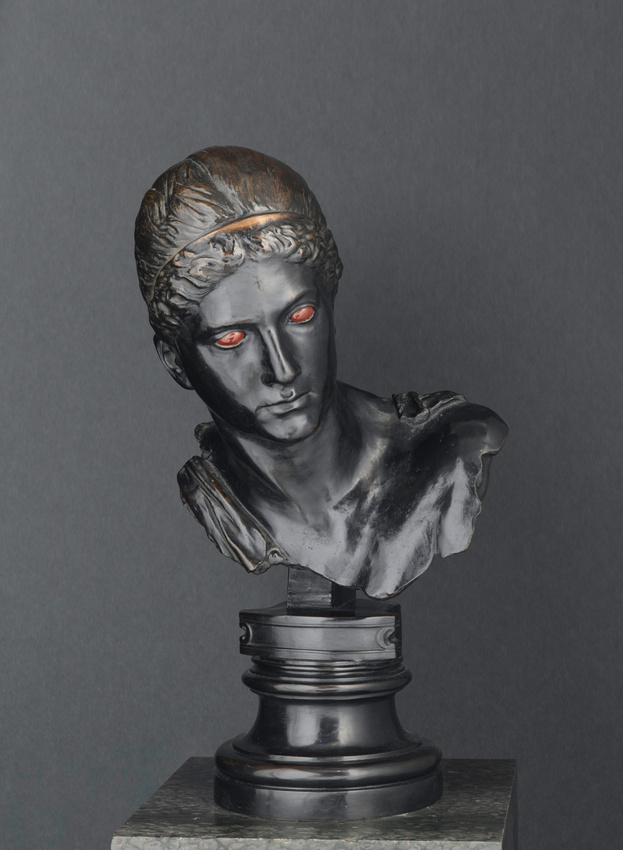Cassandre
In ancient mythology Cassandra was a Trojan princess who had received a gift of prophecy from Apollo. But the god, offended that she had rejected his advances, condemned her to never be believed. So she was not listened to when she predicted the burning and fall of Troy and when she tried in vain to prevent the famous horse from being brought into the city. To suggest this prediction and perhaps the anguish generated by her visions, Max Klinger set fiery cornelian eyes into the dark bronze face.
The first version of the sculpture was made in marble, adorned with pale alabaster draperies, yellow amber eyes and a red marble pedestal. The details of the face were then painted on to the marble. This bronze version produces a more impressive, morbid effect. There are several versions, with or without arms.
Cassandra is typical of Symbolism, a movement that started in the 1880s and spread throughout Europe. Klinger is one of its main representatives in Germany. He readily explored the theme of the femme fatale, used unexpected materials and techniques, and liked fragmentary works with jagged outlines which produce a strange effect.

